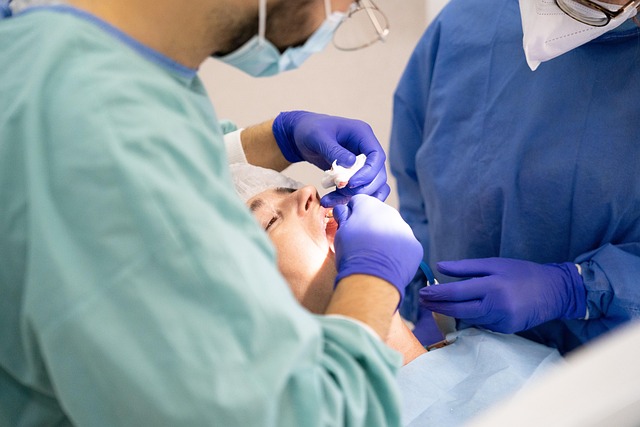For individuals considering embryo transfer with donor eggs post-ovarian removal, understanding egg donation is key to their path to parenthood. Advancements in reproductive tech ensure high-quality eggs for IVF and maximize implantation success rates. The process involves meticulous selection and preparation of eggs, comprehensive medical evaluations, and careful placement of embryos in the uterus. Post-transfer care includes rest, relaxation, balanced diet, and regular check-ups with healthcare providers to support optimal embryo development. This approach maximizes chances of success using egg donation after ovarian removal.
“Embarking on the journey of preparing for embryo transfer with donor eggs? This comprehensive guide is tailored for individuals navigating the complex path to parenthood post-ovarian removal. We delve into the intricacies of understanding egg donation, assessing fertility, and the meticulous steps involved in the embryo transfer process. By exploring evaluation criteria and post-transfer care, this article ensures you’re equipped with knowledge, fostering a smooth transition towards nurturing your new beginning.”
Understanding Egg Donation After Ovarian Removal: A Comprehensive Guide
For many individuals undergoing embryo transfer using donor eggs, understanding the process of egg donation after ovarian removal is a crucial step in their journey to parenthood. This comprehensive guide aims to shed light on this aspect, offering insights into how it works and why it’s essential for successful treatment.
Ovarian removal, often due to medical necessity or as part of an egg freezing procedure, can raise concerns about future fertility. However, with advancements in reproductive technology, egg donation has become a viable option. After ovarian removal, egg donation allows for the acquisition of high-quality eggs from a donor, ensuring that embryos created through in vitro fertilization (IVF) have the best chance of implantation and successful pregnancy. This process involves careful selection of suitable donors based on medical history, genetic compatibility, and age, followed by a meticulous procedure to retrieve and prepare the eggs for transfer into the recipient’s uterus.
Evaluating Your Fertility: Assessment and Eligibility Criteria
Evaluating fertility is a crucial step in preparing for embryo transfer using donor eggs, especially after procedures like ovarian removal. This process involves a comprehensive assessment to determine an individual’s eligibility and potential challenges. Medical professionals consider various factors, including age, medical history, and previous reproductive experiences, to gauge fertility potential. Advanced diagnostic tools, such as hormonal analyses and ultrasound scans, are employed to assess egg quality and reserve.
For those considering egg donation after ovarian removal, understanding the impact of these factors is essential. Eligibility criteria vary across clinics, but general assessments focus on ensuring donor eggs will align with recipient needs. This careful evaluation process is designed to maximize chances of a successful embryo transfer, offering hope for building families through advanced reproductive technologies, including egg donation after ovarian-related procedures.
The Embryo Transfer Process: Step-by-Step Preparation
The embryo transfer process begins with a thorough preparation to ensure the best chance of success. First, patients undergo a series of medical examinations and blood tests to assess their overall health and fertility status. This step is crucial after ovarian removal, as it helps in understanding any potential challenges and tailoring the treatment accordingly. During this phase, doctors also evaluate the donated eggs to guarantee their quality and viability.
Once all parameters are optimized, the embryo transfer procedure is scheduled. On the day of the transfer, patients are typically prepared with a local anesthetic. The physician then carefully inserts a thin catheter into the uterus, guiding it to the appropriate location. The embryo(s) selected for transfer are gently placed inside the uterine cavity, where they can implant and establish a connection with the uterine lining. This meticulous process requires skill and precision, especially when considering egg donation after ovarian removal, ensuring the best outcome for the patient.
Post-Transfer Care and Next Steps: Nurturing Your New Journey
After the embryo transfer, proper post-transfer care is crucial for nurturing your new journey. It’s essential to rest and listen to your body’s signals during this period. Maintain a comfortable environment, ensuring adequate sleep and relaxation. Avoid strenuous activities or any form of physical exertion that might cause stress to your body. A balanced diet rich in nutrients supports the development of the embryo. Stay hydrated by drinking plenty of water, as it aids in overall cellular function and helps maintain optimal hormone levels.
The next steps involve close monitoring and regular check-ups with your healthcare provider. They will guide you through the process, offering support and addressing any concerns. During these visits, they may perform ultrasounds or blood tests to track the embryo’s progress and assess your overall health. Remember, open communication with your doctor is vital, ensuring any questions or challenges are promptly addressed, especially considering the sensitive nature of egg donation after ovarian removal.
Preparing for embryo transfer with donor eggs, especially after ovarian removal, is a crucial step towards building a family. By understanding egg donation, evaluating fertility, and meticulously following the embryo transfer process, individuals can navigate this journey with confidence. With proper post-transfer care, they can embrace the next chapter of their reproductive journey, fostering hope and nurturing new life. For those considering egg donation after ovarian removal, this comprehensive guide serves as a valuable resource to ensure the best possible outcome.
